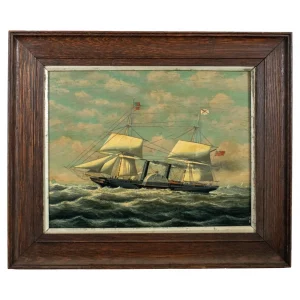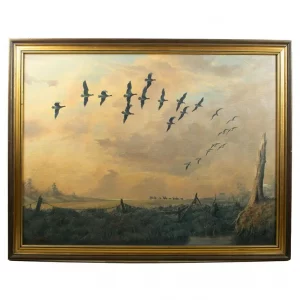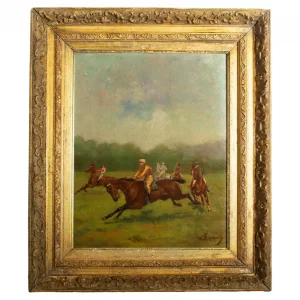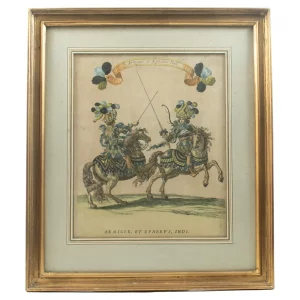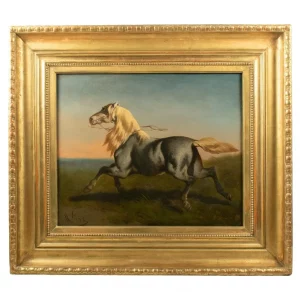La Petite Course No. 9″: Oil on Canvas after Alfred de Dreux. “La Petite Course” translates to “The Little Race” and was a series of paintings focusing on horse races, a popular pastime in mid-19th century France.
The painting, dated 1842, is part of de Dreux’s exploration of this theme. These works typically highlight horses in motion, the excitement of racing, and the skill of both the animals and their riders. The painting, the original of which is documented in the Cabinet Raisonne by Marie-Christine RENAULD page 106, is a non identical copy after de Dreux.
The painting bares an indistinguishable signature bottom right and is in fair condition, having been relined in the past and subject to restorations and retouching. It is framed in an antique effect contemporary frame. Size unframed: 36 x 48cms Alfred de Dreux and His Equine Mastery: Alfred de Dreux (1810–1860) was a French painter best known for his depictions of horses, particularly in the context of racing and hunting scenes. He came from an aristocratic family and was well-acquainted with the world of French high society, which provided him with ample opportunities to observe and paint the horses that were prized by the nobility. His works are often admired for their exceptional ability to capture the beauty, grace, and dynamism of horses. The specific piece “No. 9” is part of a numbered series, and while not as widely documented as some of his other works, it would likely showcase de Dreux’s characteristic attention to detail in depicting the horse’s form and the race’s intensity. The artist often portrayed horses in full gallop, capturing every muscle and movement, which in turn emphasized both their physicality and the thrill of competition. Artistic Techniques: De Dreux had a unique talent for rendering horses with a level of anatomical precision that set him apart from many of his contemporaries. His mastery of light and shadow, along with his ability to convey motion, made his paintings vibrant and dynamic. In “La Petite Course No. 9,” we can expect to see the horses depicted in various stages of the race, possibly emphasizing their powerful strides, their glossy coats, and the tension of competition. Historical Significance: Horse racing was immensely popular during the 19th century, particularly among the French aristocracy, and Alfred de Dreux’s works aligned with the tastes and interests of his wealthy patrons. His focus on horses was not only a personal interest but also a reflection of societal trends during the period, where equestrian pursuits were symbols of prestige, power, and elegance.
